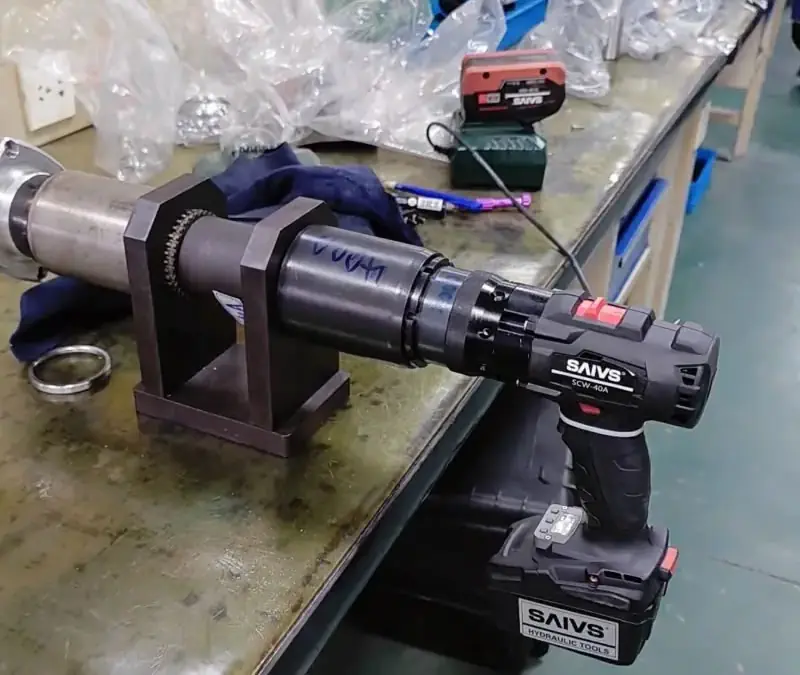Battery Torque Wrench Safety, Usage, and Maintenance for Industrial Fastening
Battery Torque Wrench Safety, Usage, and Maintenance for industrial fastening
Introduction:
Battery torque wrenches combine portability with precision, making them indispensable for many industrial fastening tasks.
When selected and used correctly, these tools improve assembly quality and productivity while reducing worker fatigue.
However, achieving consistent results and maintaining safety requires strict adherence to best practices for operation, inspection, and maintenance.
Why Proper Use Matters
Using a Battery Torque Wrench correctly ensures fasteners reach their specified torque value, which preserves structural integrity.
Incorrect torque, including over-tightening or under-tightening, can cause component failure, leaks, or costly rework.
Improper handling can also create safety hazards, such as wrench slip or uncontrolled reaction-arm movement.
For procurement teams and maintenance planners, choosing the right tool and following usage protocols reduces lifecycle costs and warranty risks.

Essential Safety Precautions
Personal Protective Equipment (PPE)
Always wear appropriate PPE before starting work.
Safety glasses and gloves are the minimum requirement when operating battery torque wrenches.
Hearing protection is recommended in noisy environments where several power tools are in use.
Pre-Use Inspection
Inspect the wrench, battery, sockets, and reaction arm for signs of damage or excessive wear.
Check for secure battery seating and that the tool powers up and behaves normally during a short test cycle.
Do not use tools with cracked housings, bent reaction arms, or stripped drive squares.
Work Area Set-Up
Clear the work area of loose tools and debris to prevent trips or interference with the reaction arm.
Position the operator and any bystanders well clear of the torque direction and the reaction path.
Anchor or brace the reaction arm against a stable surface that can withstand the reaction forces without shifting.
Step-by-Step Correct Operation
1. Select the right tool and socket:
Match the wrench’s torque range to the application and confirm sockets fit the fastener squarely.
2. Set the desired torque:
Program the wrench to the exact torque value specified by engineering or the fastener manufacturer.
When in doubt, use the recommended torque chart rather than guessing—accuracy matters.
3. Position the reaction arm:
Place the reaction arm against a strong, stationary feature that is perpendicular to the wrench axis.
A poor reaction surface will allow movement and produce inaccurate torque readings or unsafe recoil.
4. Apply smooth, continuous force:
Engage the socket on the fastener and operate the wrench in a steady manner until the tool indicates the target torque.
Do not use impact-style pulsing or rapid jabs—battery torque wrenches are designed for controlled, continuous operation.
5. Confirm completion:
After the wrench signals torque achieved, verify fastener condition and, when required, perform a torque-audit with a calibrated reference wrench.
Maintenance to Preserve Accuracy and Life
Regular maintenance protects both tool accuracy and investment value.
Create a simple log for cleaning, lubrication, battery condition, and calibration dates to support traceability.
Daily and Weekly Care
Wipe tools clean after each shift and remove dirt or grease from the ratchet head and reaction arm pivots.
Charge batteries in accordance with manufacturer guidance and store them in a cool, dry place.
Lubrication and Parts Replacement
Periodically lubricate moving parts—follow the manufacturer’s lubricant type and intervals.
Replace sockets, drive squares, and reaction pads that show wear rather than trying to compensate by increasing torque settings.
Calibration and Verification
Calibrate battery torque wrenches at least annually, or more often under heavy use or after suspicious performance.
A certified calibration ensures traceable accuracy for safety-critical assemblies and supports quality audits.
SAIVS provides calibration and after-sales support to help buyers maintain tool precision and compliance.
Common Mistakes and What to Avoid
Do not use a torque wrench outside its rated range, as this degrades accuracy and risks damage.
Avoid using the wrench as a breaker bar for loosening corroded fasteners—use the correct tool for that job.
Never submerge battery tools in liquids or expose them to high humidity without proper protective ratings.
Procurement Tips: Choosing the Right Battery Torque Wrench
Evaluate the intended torque range, battery life, ergonomics, and available accessory sockets before purchasing.
Consider tools with adjustable torque profiles, clear digital readouts, and reliable reaction arm designs for better ergonomics and repeatability.
Ask suppliers about calibration services, spare parts availability, and warranty terms to minimize downtime after purchase.
Why Choose SAIVS for Your Torque Tool Needs
SAIVS supplies industrial-grade battery torque wrenches built for demanding environments.
Our products are selected for accuracy, durability, and serviceability to meet aerospace, energy, oil & gas, and heavy manufacturing standards.
SAIVS also supports customers with calibration, spare parts, and technical guidance to ensure tools stay accurate and safe throughout their service life.
Buying from SAIVS helps procurement teams reduce total cost of ownership while keeping assemblies within specification.
Conclusion
Safe and accurate torque application is a combination of the right tool, consistent procedure, and disciplined maintenance.
By following the steps above and partnering with a trusted supplier such as SAIVS, teams can improve assembly reliability, protect workers, and extend tool life.
For procurement or technical inquiries about battery torque wrenches, calibration programs, or spare parts, contact SAIVS to get tailored recommendations for your application.
About: Ningbo Saivs Machinery Co., Ltd.
Contact: For product details, calibration services, and bulk purchasing options, request an equipment consultation from SAIVS.
Why Choose SAIVS™ as Your Supplier?
With 20 years of industry experience, SAIVS is a leading Chinese manufacturer of high-quality tools, offering competitive pricing and excellent customer service.We pride ourselves on exceptional quality control, extensive experience, and comprehensive after-sales service.